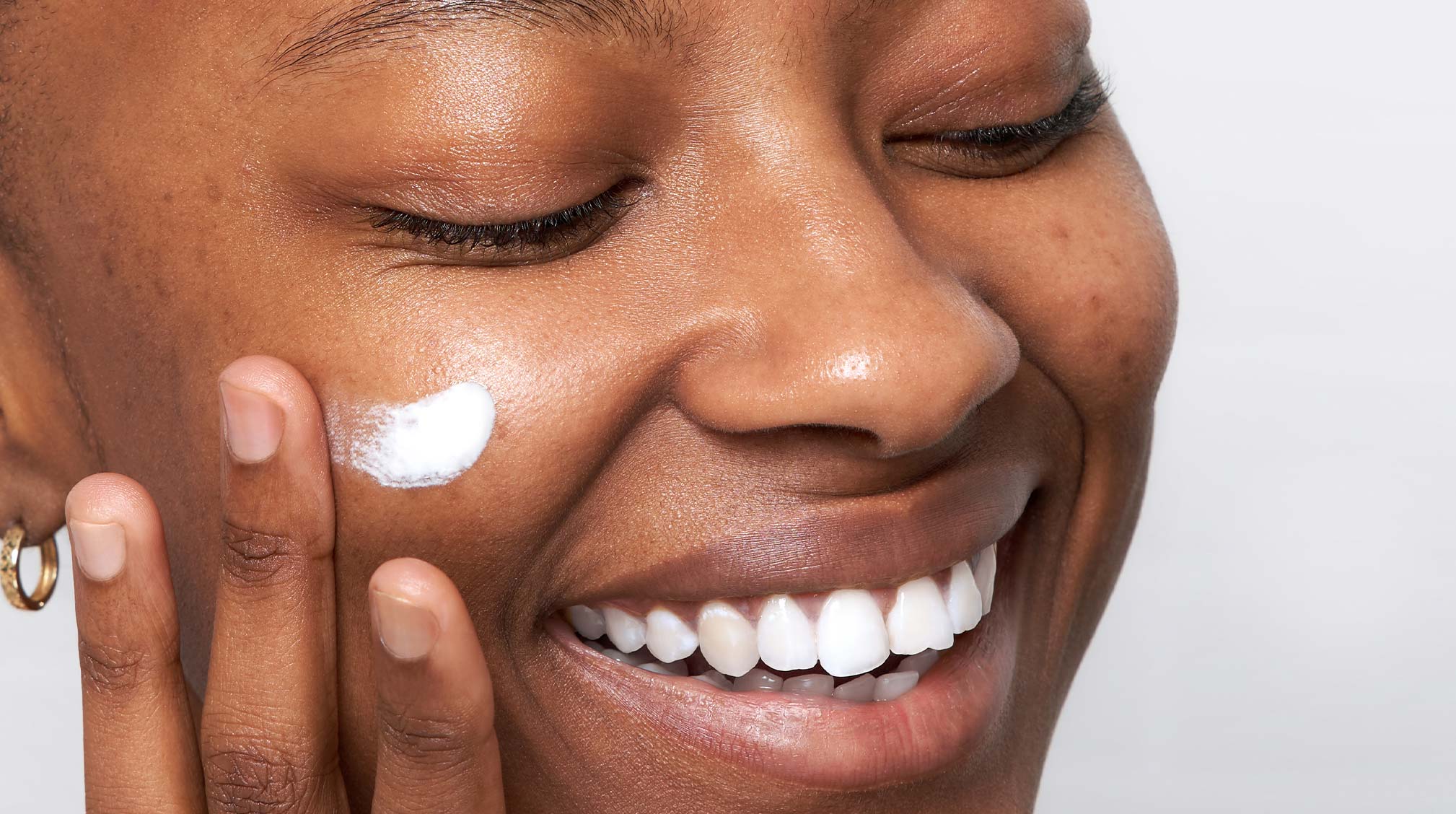
Whether it’s the result of acne battles long ago or aging gracefully, uneven skin texture can be a real PITA. It’s pretty much impossible to mask with a dab of concealer and not every skin type can handle rough exfoliating scrubs.
While uneven skin texture — or a bumpy feel or lack of overall smoothness in your complexion — may not be as hot a topic as uneven skin tone, it’s a concern that’s just as common. Keep scrolling to find out what’s causing the lumps, bumps and rough patches and how to get smooth skin in a few simple steps.
What causes textured skin?
Unless your uneven skin texture is caused by acne scars, it can be difficult to pinpoint a single cause. Natural aging, dry skin, sun damage or even using the wrong skincare products are all common culprits.
As we age, the rate at which our skin cells turn over slows down. This causes dead skin to accumulate, which gives our skin a dull appearance and rough texture. Add years of unprotected sun exposure to that, and you’ve got even more bumps and larger pores from free radical damage to the skin’s natural collagen stores.
Dry skin, whether naturally or from incorrect product usage, or skin conditions like eczema also result in scaly, rough skin. Some aspects of your skin texture, like pore size and acne, are hereditary. Then there’s lifestyle choices, such as smoking, poor diet or not staying hydrated, as the final contributing factors.
How to get rid of textured skin
While uneven skin texture isn’t a major problem or harmful in any way, most of us would prefer to leave the scaly rough patches to Mystique. Luckily, we’ve got some solid at-home and in-office tips and treatments to get your complexion feeling silky smooth in no time.
1. Exfoliate on the reg
Dead skin cell buildup is one of the most common causes of uneven skin texture, and exfoliation is one of the easiest solutions! Everyone should exfoliate twice a week (yes, even those with sensitive skin). How you choose to exfoliate is up to you.
If you find that physical exfoliants or facial scrubs, are too abrasive for your sensitive skin, opt for chemical exfoliants. The last thing you want to do is cause micro-tears in your skin, which will leave your skin texture worse than when you started.
The most popular chemical exfoliants are alpha hydroxy acids (AHAs) and beta hydroxy acids (BHAs). While both work to reveal brighter, smoother skin, BHAs like salicylic acid go deeper and are best reserved for oily and acne-prone skin. AHAs, such as glycolic, lactic and citric acids, are less irritating and drying.
Learn all about exfoliation >>
2. Treat acne right
What’s the best way to treat acne scars? Prevent them from developing in the first place! Sure, there are times when acne scars form despite your best efforts (usually from cystic acne), but most of the time, there are steps you can take to prevent acne scarring.
First, catch a pimple early. As soon as you feel a pimple starting to form, treat it. Don’t wait for the pus or whitehead to appear. Try microneedle patches like Micropoint for Blemishes, which has 173 microneedles that dissolve blemish-busting salicylic acid straight into the source of an early-stage pimple. If you don’t discover the pimple until the whitehead or pus is visible, don’t pop — patch instead! Using a hydrocolloid patch like Mighty Patch will absorb all of the pus from a pimple without causing the trauma to the surrounding skin that picking or popping does. And finally, heal your post-pimple skin as soon as possible in order to reduce texture issues and the likeness of scarring. Look for a post-blemish soother like Rescue Balm to smooth scaly, uneven texture and reduce the look of after-blemish bumps.
More on how to treat a pimple at every stage >>
3. Sunscreen. All day. Every day.
If you are a dedicated Skin School reader, you’ve heard it from us before. Don’t skip sunscreen. Ever. Aside from the obvious benefits (preventing skin cancer and sunburn), your daily SPF can help prevent free radical damage, premature aging and increased pore size — all factors in uneven skin texture.
WFH? You need sunscreen indoors, too >>
4. Up your antioxidants
Including antioxidant-filled formulas in your routine can help your skin ward off the free radicals and environmental damage that cause texture issues. One of the best skin-loving antioxidant brighteners — vitamin C — will also help reduce scar tissue and age spots.
Find out all the skin benefits of vitamin C >>
5. Visit the dermatologist
If you’ve tried it all at home and are still unhappy with your skin texture, head to the dermatologist. There are a variety of in-office procedures that can help refine and improve skin texture.
- Microneedling uses a handheld roller with tiny needles that puncture the skin. As the skin heals from the small wounds, it creates more collagen, which improves the overall appearance of skin and smooths textured skin. (Average cost: $100-$700 per session)
- Microdermabrasion is a non-invasive treatment that deeply exfoliates the top layer of the skin. It works best on texture issues that are closer to the surface. (Average cost: $75-$300 per treatment)
- In laser skin resurfacing, the dermatologist uses lasers to remove the top layer of the skin, which helps stimulate new skin cell growth and dramatically reduces the appearance of uneven skin texture. (Average cost: $1,000- $2,300 per session)
- Chemical peels involve a chemical solution that exfoliates the skin, which then causes the top layer of skin to peel off. This method works best on deeper acne scars and texture issues. (Average cost: $100-$1,000 per session)
- A steroid injection is a cortisone shot that a dermatologist injects directly to an acne scar to help reduce its size. (Average cost: $50-$100 per shot)














